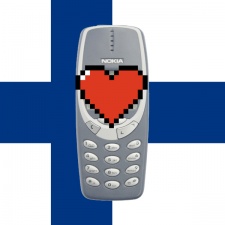In the build up to Pocket Gamer Connects Helsinki 2015 - which runs from 7-8 September 2015: get your tickets here - this week, we're looking back over the history of the Finnish mobile games industry.
You can read the full set here.
One of the great misconceptions about history is that once the record is written it is irrefutably set in stone.
That's far from the truth. Instead, history is a process regularly re-evaluated, re-written and reconsidered in the light of new evidence and analysis.
The history of mobile gaming is no different, which leads us into discussing the Nokia N-Gage.
Released in the autumn of 2003, the device is remembered for being a commercial and practical failure. The familiar criticisms of holding the phone on the side, having to remove the battery to change a game, and having a woefully small portrait screen are used as the starting point of a negative narrative that can stretch from the downfall of the device itself to the slow, terminal decline of Nokia itself.
Yet while the commercial facts about the are irrefutable, the N-Gage's role in mobile game history - indeed in the rise of dedicated mobile gaming, and particularly in terms of kickstarting mobile game developers in Finland - is very different.
N-Gage is remembered for being a commercial and practical failure.
Perhaps the N-Gage could (or even should) be considered a glorious failure that both paved the way for mobile gaming as we know it, as well as fuelling the engine of Finnish mobile gaming growth.
A comedy of errors
Nevertheless, denying that the Nokia N-Gage released in October 2003 is a flawed device is akin to denying that the Earth is spherical.
As a mobile handset and as a gaming device it was a mess, destroying Nokia's reputation as the leading light in the mobile industry.
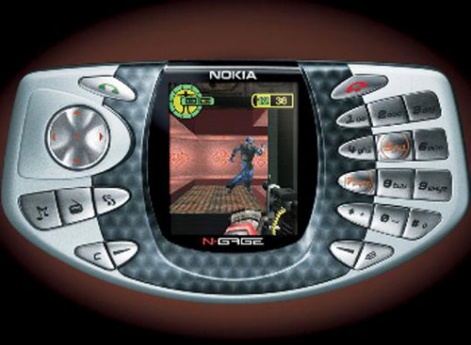
The intentions behind it were broadly speaking positive. Having seen the success of games on their handsets and the broader success of handheld consoles like the Game Boy Advance in the late 1990s, Nokia decided to embark upon the mission of releasing a handheld gaming device that doubled as a phone.
The genesis of this idea was Nokia going after Pokémon dollars on mobile.Scott Foe
According to Scott Foe, who worked for Sega and Nokia in the early 2000s that mission was far from a misguided folly as has often been painted by many in the industry.
"Strategically, it was very sound for them to go mobile," he says.
"The genesis of this idea was Nokia seeing the Pokémon dollars and going after that on mobile."
Cheap, not cheerful
However, Nokia's problem lay in their own ability to execute that concept in a successful and compelling manner. The corporate logistics driven mentality of Nokia towards their handset design and sales strategy, which favoured an approach that drove costs down in an attempt to saturate as many markets as possible.
This was important when it came to the N-Gage's poor design, particularly as a gaming device.
As a result, the design issues, which reviews picked up instantly at launch, played a significant role in damaging the future of the handset and the brand as a whole.
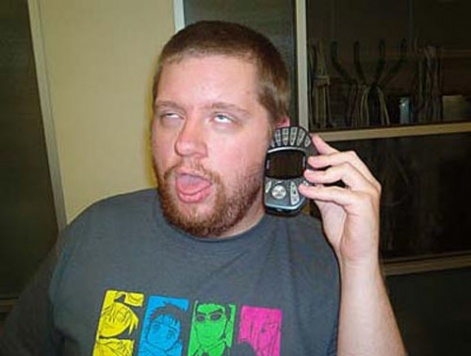
The mocking tone towards the way you held the "taco phone" to answer a call, the counter intuitive way you had to insert games, and the low quality of the mobile element of the handset sunk the concept at launch.
Within a week, reports began trickling out in the UK that the N-Gage's main rival the Game Boy Advance was outselling the device 100-1.
A redesigned N-Gage (N-Gage QD) in 2004 did little to assuage the problems to the point that, by 2005, the ELSPA, the UK's charting authority at the time, stopped compiling the N-Gage charts due to the low sales and "lack of interest" in the device.
Despite attempts by Nokia to re-launch the device and turn the N-Gage brand into a software platform, the N-Gage was dead in the water.
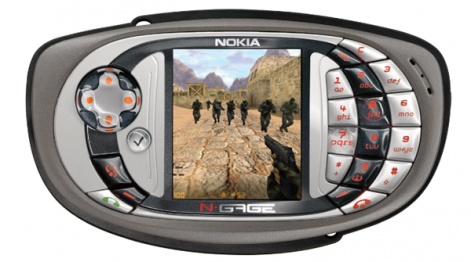
In October 2009 when the plug was finally pulled on the whole concept it had played its part in contributing to multiple hundreds of millions of dollars loss. As Nokia declared they were standing on a burning platform, the N-Gage perished in the fire; an irreparable disaster for Nokia's gaming ambitions.
"It ended up in a space where it was neither a great gaming device and neither a great phone" according to Jussi Laakkonen, who at the time worked with Nokia as Bugbear's business development manager, and it is that epithet which explains why it was such a commercial failure.
Turning things on its head
Yet while few people rush to defend the N-Gage as a handset or a commercial success, interpreting the N-Gage's role on mobile gaming solely through the lens of business success or otherwise is an error.
N-Gage was one of the most important moments in the development of the Finnish mobile gaming scene.Juho Kuorikoski
In fact, some Finns will defend it or even talk up its role in the industry - despite being broadly critical of the device.
Scott Foe, who used less than complimentary words to describe the N-Gage handset said that "the problem with the N-Gage was ultimately a failure of tactics rather than timing."
Juho Kuorikoski, author of a Finnish history of mobile games, describes the N-Gage as "one of the most important moments" in the development of the Finnish mobile gaming scene.
Meanwhile Laakkonen says that the N-Gage was vital to the "development of Finnish mobile developer talent in the early 2000s" and that a number of companies couldn't have survived without it.
What does this mean?
Well, while it is obvious that the handset itself was a disaster, when you place the N-Gage in the broader context of the developing industry globally and in Finland, it played a more important role than many perceived in helping to develop mobile gaming's value in the broader market.
Pioneering to the end
On a broader front, the N-Gage established the blueprint for many of the features that we've come to take for granted on mobile in the smartphone era.
The principal example of this was the use of GPRS and Bluetooth technology to implement the first effective wireless gaming features on a mobile handset, paving the way for a number of important innovations.
These included the creation of the first gaming social network, N-Gage Arena, which would prove a forerunner to the likes of Apple's Game Center. Admittedly, the design of it wasn't right for mobile. Foe, who ended up at Nokia after Sega's nascent mobile work was acquired by the Finns following the Dreamcast collapse, designed the network on the principals of an online forum and it didn't work out.
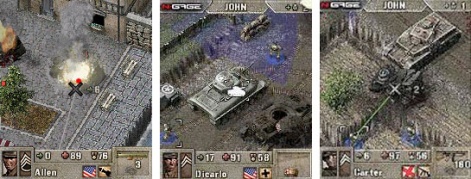
"One of the huge mistakes I made early on was I was responsible for conceiving and defining the N-Gage Arena without analytical insights into it," Foe confesses.
"I pretty much lifted it from console, with lobbies and leaderboards, but it didn't translate to mobile. Ultimately, the design didn't reflect the medium or the reality of the platform."
Great games
Yet nevertheless, it laid out a blueprint that Nokia were to build and expand upon within their games in a way that would pioneer socialising in mobile games in a way never seen before.
Crucially for the Finnish market, the N-Gage represented a serious boost to the development scene.
Pocket Kingdom, one of the N-Gages few successes, stood out as the first mobile MMO and managed to pack in social features that would barely have been recognizable on the web at that time.
On that front, the N-Gage managed to show that it was possible technologically to build a mobile social platform and still appeal to hardcore games: an irresistible fusion that is one of the core elements to creating a mobile success story in the current market.
More crucially for the Finnish market, the N-Gage represented a serious boost to the development scene. With Nokia desperate for content and willing to invest in games, local developers were able to rely on funding until about 2006 for almost any kind of game they wanted.
This included Finnish developer Bugbear's Glimmerati.
"When you think about console launches, which is what the N-Gage was, you have to have a racing title. Nokia phoned around for companies and had worked on racing before, looking for someone who had worked on racing title," reminisces Laakkonen, when recalling how Bugbear got onto the N-Gage.

"What was really excited was making an M-Rated title with Nokia a racing game in a cheeky jet set world, racing through Monaco to catch someone chasing down your girl.
"I'm still impressed that it went through the Nokia filter. You'd be racing someone and the prize you'd get would be the keys to the alpine skiing team of Sweden."
Glimmerati was obviously not the most cerebral title you could imagine releasing as a launch title yet the fact it existed showed the willingness of Nokia to support local companies with talent who were willing to create for the platform.
Without Nokia's support in this period, Angry Birds wouldn't be alive.Jussi Laakkonen
Such support was essential for the industry. On the one hand, it helped prop up a number of developers with Laakkonen saying that without Nokia's support in this period "Angry Birds wouldn't be alive".
At the same time, it also allowed other developers to thrive and get noticed. The now Ubisoft-owned Red Lynx, known mostly for their work on Trials HD, was the star developer for N-Gage, with turn-based strategy game Pathway to Glory a shining light.
Ultimately, the crucial role the N-Gage played was in the development of Finnish gaming talent and in the spread of it throughout the country in the lead up to the iPhone emerging.
In fact, Laakkonen argues that the N-Gage and the work of the early mobile gaming companies in the Finnish industry was much more important to the success of the sector in the country than the Nokia fallout post 2009.
"The common fallacy is that the downfall of Nokia led to the developing of games - it was more about the development of talent earlier" Laakkonen says.
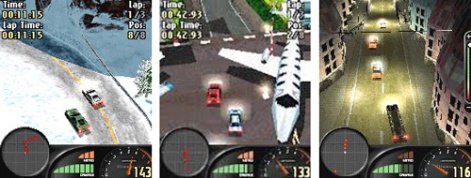
"The Nokia funding and N-Gage helped people to grow but it didn't necessarily grow the talent - it made them viable and help those studios to develop and learn.
I'd also look at the influence of companies like Mr Goodliving etc who went mobile first like Sumea which merged with Digital Chocolate. There were things that you'd look at and say 'that was a mobile game'. "
A glorious failure
It is hard to see the N-Gage device as anything other than a miserable failure of a handset. It was impractical as a mobile, sub-par for gaming and was dead on arrival in commercial terms across the world.
But when you look at it in the light of the industry and the ideas it had as a whole, that failure should be considered somewhat glorious.
It produced the ideas and innovations that, even though many were forgotten by the industry, would become familiar within the context of the modern scene. And the money poured into the Finnish gaming scene to try to keep the device afloat played its part in providing a solid income and training for mobile developers across the country.
The N-Gage deserves to have its memory rehabilitated.
The N-Gage therefore deserves to have its memory rehabilitated. While no-one will ever defend it from a design perspective, it was the first handset to take mobile gaming seriously and the developers of Finland benefitted from the patronage of the company who aimed for the goal ahead of when it was perhaps truly achievable from a technical perspective.
Crucially, it created a deep level of talent ready and able to exploit the moment when the democratisation of development and distribution exploded onto the mobile gaming scene in 2007: the arrival of the iPhone.
In part four of this series, we'll investigate the rise of Rovio and how the arrival of the iPhone transformed the industry.

